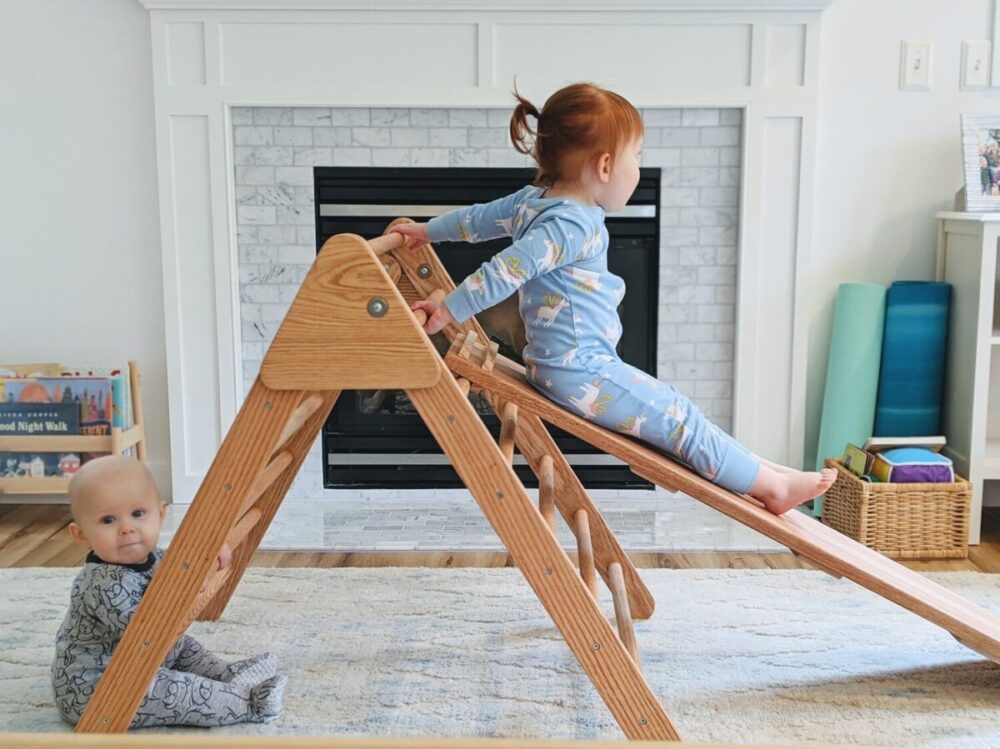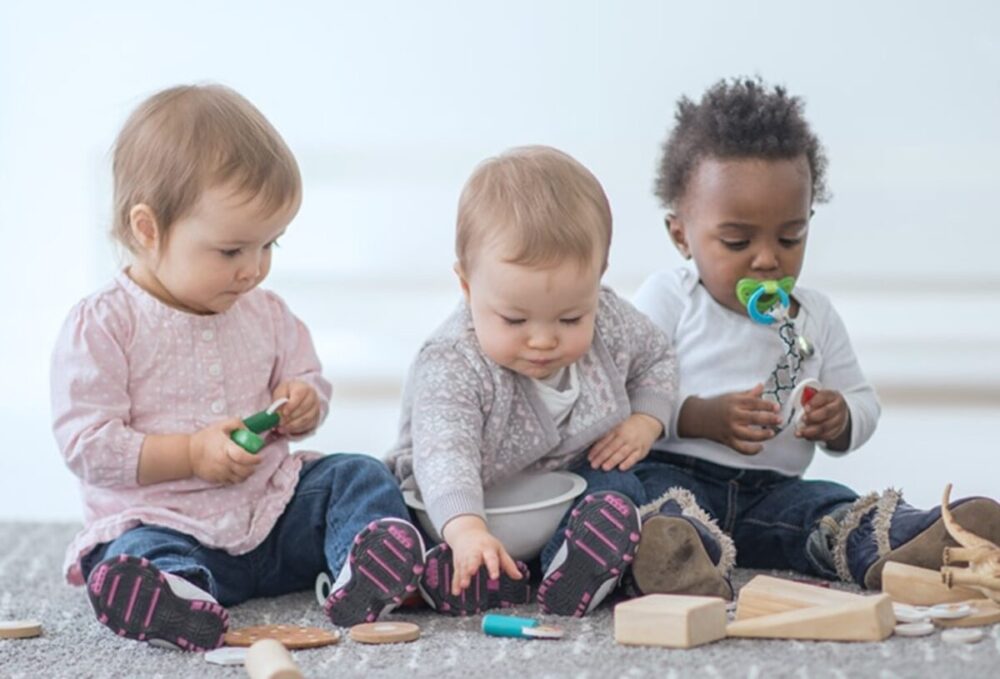A Pikler triangle is a type of free-standing climbing frame that encourages children to be adventurous and creative in their play. It was developed in the 1930s by Hungarian pediatrician Emmi Pikler and has become a popular addition to nurseries, schools, and homes as a safe and engaging option for small children. The structure is triangular in shape and is made up of rungs that allow kids to climb, slide, balance, or just hang out around the frame. Its design also enables parents or caregivers to adapt it to different levels according to their child’s age and skill level.
Benefits of a Pikler Triangle
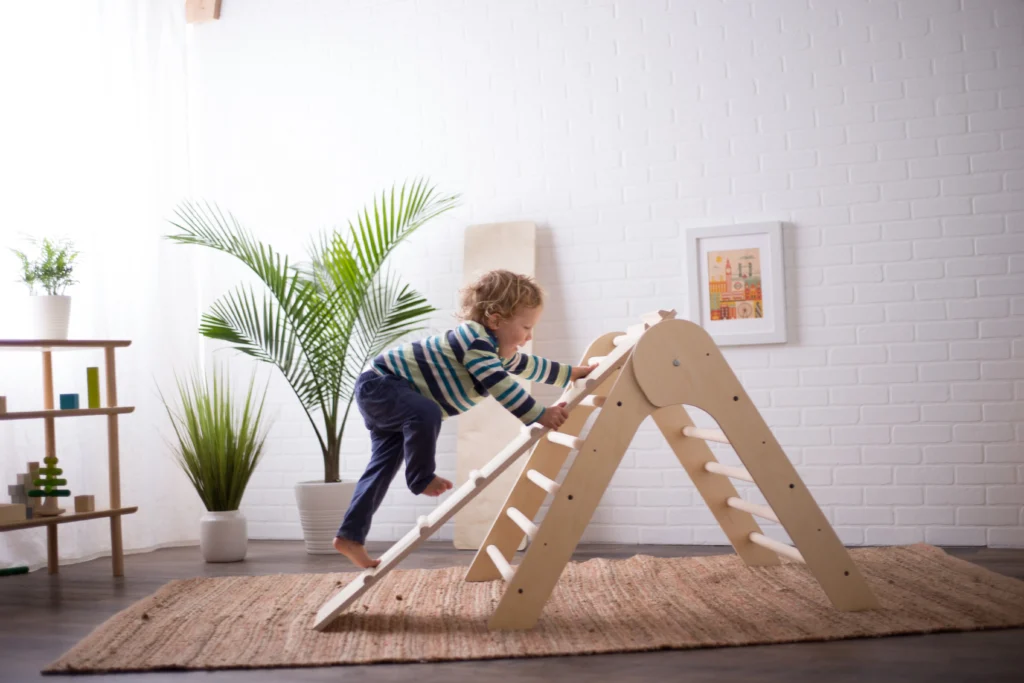
The most obvious benefit of using a Pikler triangle for toddlers is that it encourages children to explore different ways of moving in a safe environment. It helps them refine their balance, coordination, and muscle strength without overwhelming them with too much physical activity or height.
Additionally, it teaches children basic problem-solving skills by encouraging them to think about how best they can move from one step or spot inside the triangle structure to another.
Another advantage of the Montessori pickler triangle is that it helps strengthen arm and leg muscles by providing support for climbing or sliding. It also enhances children’s control over postural stability when climbing – a skill that cannot be achieved through gaming or other active play activities alone. With frequent use in exercise, this strong muscular foundation then translates into enhanced physical abilities in sports during adolescents and later adulthood.
This toy also promotes psychological well-being amongst toddlers as they learn to further explore their surroundings more boldly, and gain self-confidence through mastering new challenges within the triangle’s environment safely.
Most importantly though, the structure encourages shared moments between parent/caregiver and toddler during playtime which foster emotional bonding while providing educational benefits at the same time!
How to Start Using a Pikler Triangle
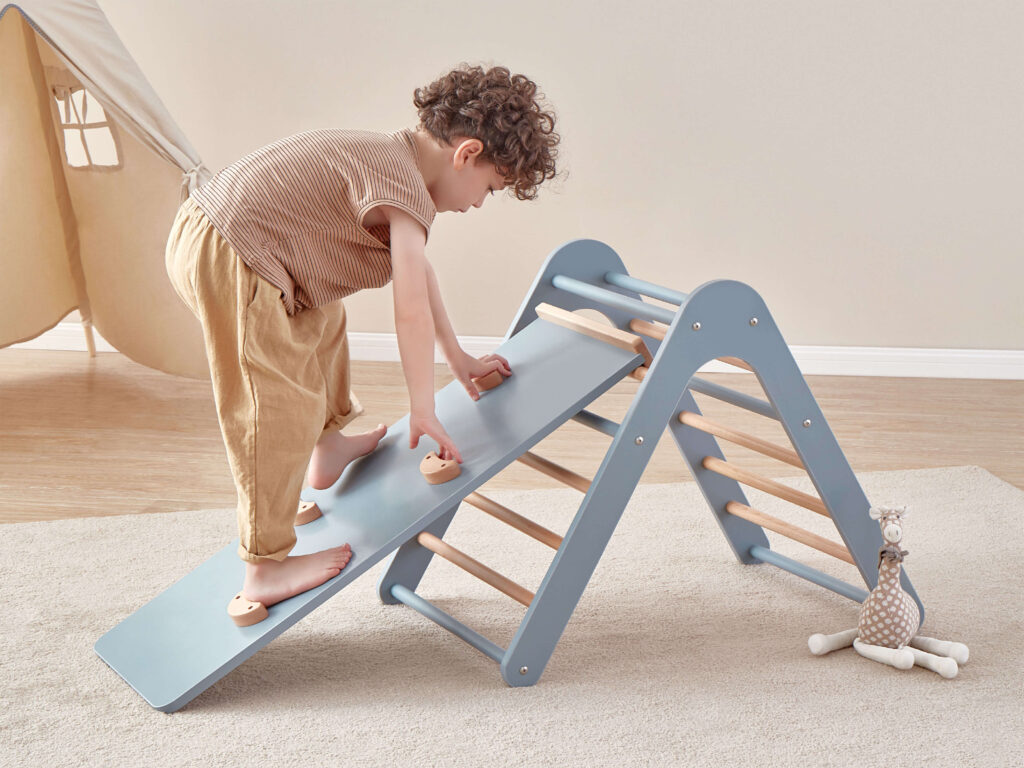
Assuming that your child is at least 8 months old, you can begin using a Pikler Triangle in your home. Young babies should always be supervised when participating in any activity that encourages physical play. If your child is especially small or late to crawl/walk due to developmental delay, please consult with your pediatrician before using a Pikler Triangle.
To use one correctly, consider the following instructions:
- Introduce it early on in your baby’s development before they become very mobile; let them explore the components within their own speed and capability.
- Monitor them closely while they are in or around the triangle — remove obstacles to prevent falls and supervise at all times until you trust their ability to assess risks themselves.
- Introduce new activities gradually as they gain confidence and strength so that they can move freely around the room while playing on it safely — use a soft mat below and any necessary padding on objects such as chairs or tables if needed for extra protection against falls or tumbles off edges!
- Help explain and show proper techniques for climbing up/down the steps without assistance; ensure that hands have a grip when going around curves/edges which could be slippery when wet! Avoid sudden movements which could cause tipping over!
- Encourage imaginative play by creating play scenes with their toys (dolls, stuffed animals, etc.) seeking adventure across different levels; inspire creativity by showing how objects can be used together in various ways than what one may perceive at first glance (use building blocks together with cars or other figures!) – explore possibilities up/down different ramps/levels and through tunnels created by turning object sideways!
Conclusion
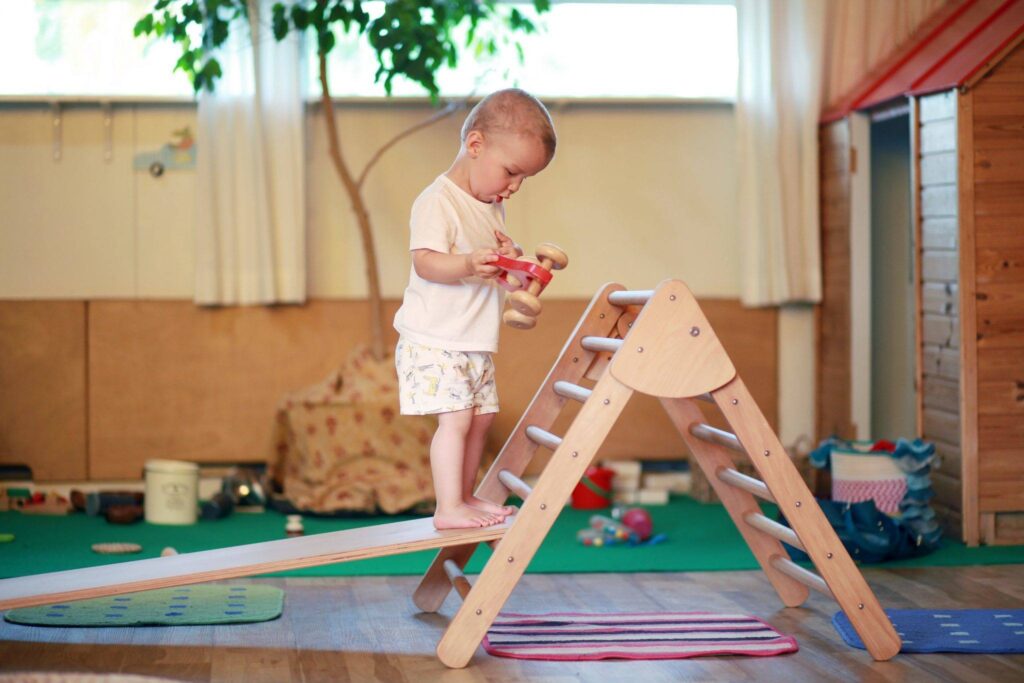
By now, you should have a better understanding of what a Pikler triangle is and the different ways that it can benefit young children. It is an exciting tool that can help children build strength and coordination while fostering their natural desire to explore and create their own imaginary universes.
Provide your child with this exciting learning tool today and watch as they grow physically, mentally, socially, and emotionally as they explore all the fun possibilities the triangle has to offer!

